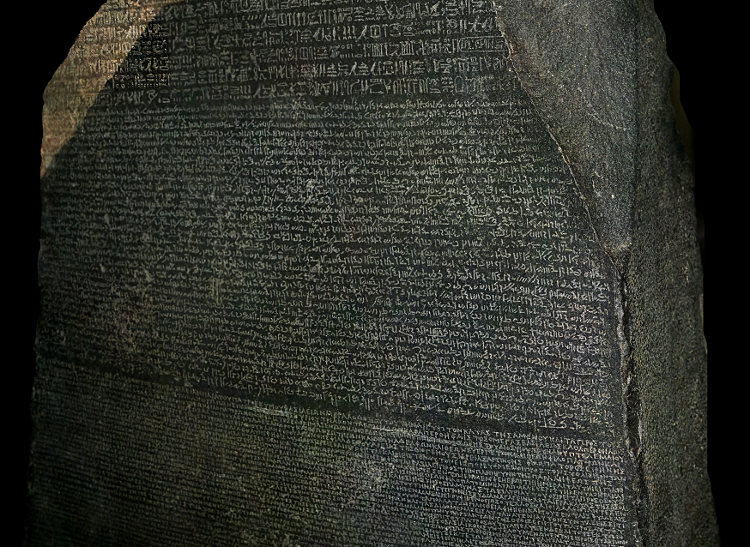There are records of more than 7000 languages existing since our first hominid ancestors emerged several million years ago. With time the first languages got more complex and then simpler, they split and then merged, evolved and disappeared. Most of them are now extinct or endangered, and nowadays about 3/4 of the world’s population uses only around 100 languages. But how does a language emerge and die, and can you actually save endangered languages?
The Origins of Human Language
According to our best archeological and biological evidence, early hominids started using basic forms of language about 6-7 million years ago. In the beginning it consisted mostly of miming, pointing and gestures, which were now easier to perform thanks to us gradually becoming bipedal until about 2 million years ago. These early proto-languages were very pictorial, as our ancestors tried to describe items or events with their hands and fingers.
With time, until around 9000 years ago, languages underwent a simplification process. The predominantly iconic and descriptive gestures morphed into more abstract and arbitrary forms. This process opened a lot of room for language variation, and adaptation to factors like geography, culture and even maybe religion. With evolution, language began moving from the hands to the face and mouth, freeing our upper limbs for other important activities. And that’s how you get 7000 languages!
Known Ancestor Languages
So, let’s take a look at the oldest languages with writing systems that we know of, and that we have found evidence for. We can divide them into two groups based on whether they are extinct or not:
- Sumerian (~3200 BCE) – extinct.
- Egyptian: (3000 – 2000 BCE) – extinct.
- Greek (1400 BCE) – still used.
- Chinese (1250 BCE) – still used.
Ancient Greek, also known as Mycenaean Greek, uses a writing system called the Linear B script. It has roughly 200 signs, divided almost in half into syllable signs and ideograms. Greek is the oldest language still spoken today, and while we can read most of the ancient texts, some features of this writing system still remain undeciphered. On the other hand, we can’t really understand spoken Archaic Chinese, however with some tricks we can very well read it today.

Credit: © Hans Hillewaert, Attribution-Share Alike 4.0 International.
Of course, this doesn’t mean that there were just 2 languages around 3000 BCE. There is just no evidence of other languages who have survived the thousands of years since. Or there are other languages which we found, but haven’t been able to decipher. But with the help of historical linguistic reconstruction techniques we have been able to look for common features of already known languages and reconstruct their ancestor without actually having found it in the written record. What we got is the Proto-Afro-Asiatic language – the oldest ancestor language from about 8000 BCE. It was most probably the ancestor of the first Semitic, Chadic, Berber and Ancient Egyptian languages.
Why Do Languages Go Extinct
Language is a fundamental characteristic of the modern human. And it is tightly connected to society, culture and education. Throughout our long history we have probably made hundreds or thousands languages extinct by destroying entire cultures and civilizations. Or it has happened slowly over time – when the climate was harsh or food was scarce, some tribes may have disappeared without any trace of a language or a writing system.
Language was very hard to preserve in ancient times, and it still is now, on a geological scale. In order to preserve and later discover a language, there are several factors that play part:
- Fairly complex community/civilization
- Writing system
- Durable writing medium
- Luck – for the texts to survive the time, and for our linguists to find and decipher them
So, it’s quite fair to assume that a great chunk of all languages ever existed are now forever gone. Once a language is no longer taught to children, its chances of survival become directly connected to the number of living native speakers. And once those are dead, and there’s no hard written evidence of it ever existing, the language becomes extinct. There are many examples nowadays of endangered languages or writing systems, which are very close to going extinct because less and less people are using them. Such are the indigenous languages of North America, the aboriginal languages in Australia, and many others. But can we save them and how?
How to Preserve an Endangered Language
Language seems to be an emergent property of human cognition and social status. It has been an enormous part of our history and culture as human beings and honestly, it’s hard to imagine our lives without it. This is why we must do our best to find and preserve all endangered languages and writing systems. We must educate the new generations about the importance of preserving our legacy and the magic of ancient languages.
Luckily there are several organizations and initiatives that focus on preserving the endangered languages and writing systems. Follow the links below to learn more about what you can do to help save them:
- The Endangered Languages Project is an online resource for samples and research on endangered languages, which also provides advice and best practices for people working to strengthen linguistic diversity.
- The Endangered Alphabets Project is a nonprofit organization that supports endangered, minority and indigenous cultures by preserving their writing systems in the form of wood carvings of sayings, spiritual texts, etc. They also work on creating and publishing educational materials and games in endangered alphabets. They have also created the Atlas of Endangered Alphabets which shows how many alphabets are on the verge of extinction, and gives you the chance to help in any way possible.

Carved by Tim Brookes, Endangered Alphabets
Hopefully now there’s a bit more you know about how we can preserve our old languages and writing systems. Let us know what you think, share this with your friends, and don’t hesitate to get back to us at hello@transglobeinternational.com for any inquiries about the alive languages we support.


Nice work, George, and thanks for including the Endangered Alphabets Project. One of my goals for the next 12 months is to address a central question you raise: how do you save a writing system, especial one whose culture is severely marginalized? My plan is to interview a wide range of people involved in revitalization efforts around the world and produce a free handbook provisionally called “How to Save an Alphabet” that shares their experiences and examples. I’m hoping this will be useful especially for those who are just starting out on the long and difficult road toward revival.
Thank you Tim! Good luck with the interviews and please keep me posted about the handbook or any other materials you may need help sharing or translating in other languages, I’d love to help!